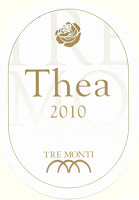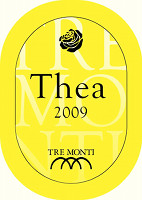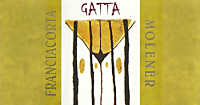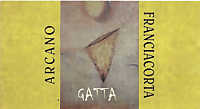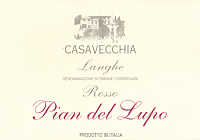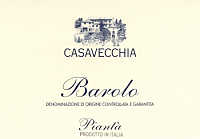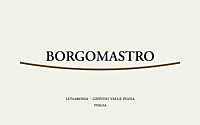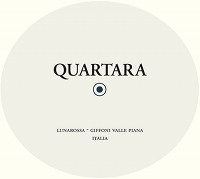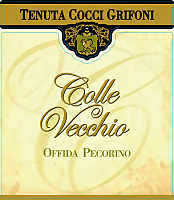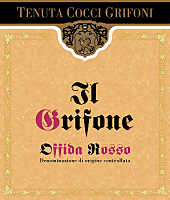|
Wine quality is the fundamental characteristic determining its agreeability.
Pleasure, as such, is something hard to define, as it is strongly associated to
the preference, culture, intelligence, interest and personal orientation of
every subject. There however are factors and characteristics meeting the favor
of many, in other words, there is pleasure which can be defined in an
objective way, despite there can be, also in this sense, exceptions. As
for wine, it could be said the evident and pungent fault which is usually
perceived by a strong and clear smell and taste of vinegar, is defined as an
unpleasing element by most of subjects, therefore, an objectively unpleasing
quality. This does not exclude, in any case, the existence of subjects to whom
the smell and evident taste of vinegar is pleasing and agreeable. Also in wine
and not only in vinegar. De Gustibus Non Est Disputandum. (There is no
dispute about taste)
There are many factors determining quality in a wine and that are
“objectively” accepted as fundamental, among the many, are mentioned olfactory
and taste-olfactory persistence, the harmony among all the organoleptic aspects
- therefore the overall harmony of wine - and balance. A wine with a short
taste-olfactory persistence, certainly disappoints every wine lover: the
evanescent flavor disappearing in few seconds, without leaving any memory in
the mouth of the perceived flavors, is one of the factors making the wine
belong, with no other chance, to the category of ordinary wines. The
quality expressed by taste-olfactory persistence is not however determined by
any flavor or organoleptic quality the wine gives senses. It is, of course,
associated to the persistence of positive stimuli: the persistence of any
possible bad taste or smell, simply worsen the judgment which can be given to a
wine. A persistent and long flavor of vinegar in the mouth certainly is not the
ideal characteristic for a quality wine.
Beauty, as it is commonly known, is an extremely subjective quality, whether it
is expressed by forms, colors, sounds or words, what can be defined as beautiful
is something purely subjective, although the concept of beauty is frequently
affected by cultural and social factors. Beauty certainly is not a concept
associated to quantity: the saying “the more, the better” does not corresponds
to the idea of beauty, indeed, to opulence. This is true for every aesthetical,
sensorial or emotional expression - after all, taller people are not necessarily
more beautiful than short people - and what makes the agreeability in something
is the harmony of every factor making it. Small or big factors, important
details and less important ones, in everything which can express the concept of
beauty, they all express, in particular, the harmony of relations they have, in
other word, they must simply look beautiful all together.
This is, of course, easy to say, not so easy to achieve. Whether it is the
expression of Nature or the talent of an artist, the lacking of harmony in what
can be perceived makes the sensation not so pleasing or even unpleasing. This
concept is also true for everything producing sensorial stimuli of olfactory or
gustatory type, therefore food and, of course, wine. Beauty of a wine is
not expressed by the category or style to which it belongs to - sweet, dry,
sparkling, white, red or whatever it is - indeed by the relation of each factor,
their quantity and how they are related one to each other. A very sweet wine
cannot be considered as very good, also for subject who particularly like this
taste, as tastiness - and therefore beauty - is the result of the relation
between sweetness and all the other gustatory stimuli. The same, of course, is
true for roundness, astringency, acidity and any other gustatory stimulus
perceived during tasting.
|
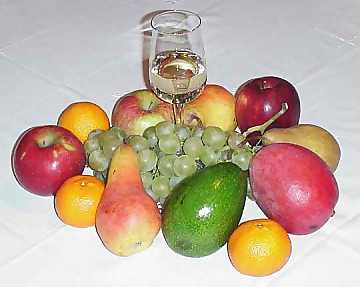 | |
| Balance is important in aromas too: each
one of them must have a harmonic relation with the other ones | |
|
In other words, the beauty of a wine is strictly connected to the harmony
produced by every stimulus and of how they are balanced one to each other. This
concept is not applied to the taste of wine only: balance is a factor also
existing in aromas and aromatic qualities. A wine having a strong and pleasing
aroma of peach, for example, could also result in a non very pleasing wine in
case this would be the only aroma perceived to the nose. The wine would be, in
other words, boring and dull, with no character or lively quality, incapable of
producing a real and long lasting interest for the senses of the taster. A
strong peach aroma - or any other aroma - without leaving room to other nuances,
or other aromas, makes the aromatic profile of a wine ungraceful, with no
olfactory balance. It would be the only actor in the scene in a too large
stage and with no support, as to make it appear small, incapable of efficiently
leading the scene and to catch the interest of the audience for a long time.
However, this important aspect must not mask or change the organoleptic nature
of a wine or a grape. A wine produced with aromatic grapes, such as Muscat Blanc
or Gewürztraminer, must, in any case, expresses the typical and primary
qualities that can make these grapes recognizable as such. It however will be
the way in which these primary qualities are related to all the other ones to
determine harmony and balance. The same is true for the gustatory quality of a
wine. Also in this case the characteristic stimuli distinguishing a specific
style must be fully expressed, however having in other stimuli and sensations
the right balance in order not to make it ungraceful, boring and with no
personality. This means that in white wines, acidity - the primary quality
marking this style, frequently defined as crispness - must always be well
perceptible however well supported, that is, balanced, by all the other
gustatory characteristics making the wine.
If it is true that in gustatory balance this condition happens with the
opposition to specific categories of stimuli, olfactory balance does not
have such strict rules. Balance in wine aromas is obtained both with aromas
belonging to the same family - fruit, flowers, tertiary aromas and so on - as
well as with aromas belonging to different families. This principle can be
easily explained with the specific case of certain fortified wines in which what
it is usually considered a fault, can be transformed into a noble quality. One
of the characteristics distinguishing Marsala and Jerez is the aroma of
oxidation, a quality which can certainly be considered as unpleasing, similarly
to a fault, in any other wine. Nevertheless in these wines, besides being a
wanted quality, it also becomes pleasing thanks to the balance created with all
the other aromas, turning what can be a fault, into a noble quality. Also in
these wines, oxidation, in case it is not balanced by other aromas, would be
perceived as excessive and not very interesting.
Likewise, an evident olfactory fault, will be less unpleasing - although
remaining a fault to obfuscate the beauty of a wine - in case it is
balanced by other aromas, in the effort of trying to balance its unpleasing
presence. Nevertheless, even a fault, just like oxidation in some wines, can
have a sort of charm in the olfactory profile, sometimes even improving it. It
can be because of perfection, despite of its beauty, can sometimes end up being
boring, even in an impeccable and perfect olfactory profile, and sometimes can
be improved by what are universally considered as faults, such us a vinegar
aroma of sulfur dioxide. In both cases, and when the intensity of their
characteristic and pungent smell is kept at a very low level and however not
evident, they can help improving the balance of aromas, moreover, they can also
favor their perception and development. In case they are present in low levels
and not evidently perceivable, both vinegar aromas and free sulfur dioxide,
significantly contribute to the perception of aromas and, with their rough and
offensive touch, can make the olfactory profile of a wine more interesting and
lively.
Balance of taste, as opposed to aromas, follows more rigid and strict rules,
first of all, according to wine style. In general terms, gustatory balance in
wine can be defined as the opposition of gustatory and tactile stimuli, in order
to harmonically affect the relative perception of each one of them in a
balanced way. Gustatory and tactile qualities defining balance in a wine
are classified in soft and hard, ideally lined up in two opposing
sides, like in two plates of the same scale. If this is true for the
determination of balance in white wines, for reds the opposition becomes more
complex because of the significant tactile role of astringency. Among
soft components are included sweetness, roundness and alcohol, whereas in
hard components are found acidity, astringency of tannins and the
quantity of mineral elements contained in a wine. To these elements is also
added the tactile effect of carbon dioxide, typical in sparkling and slightly
sparkling wines.
In white wines balance is mainly obtained by the agreeability of their dominant
and characteristic: acidity. This quality, technically also called
crispness, is the essential characteristic for every white wine and its
absence, or scarcity, makes the wine flat and dull, excessively round. Likewise,
the excess of acidity, or better to say, a non properly balanced acidity, makes
the wine too sharp, and causing - among the many things - an excessive
secretion of saliva in the mouth. Acidity, classified as a hard
substance, is balanced thanks to the effect of round substances, such as
alcohol, glycerin and roundness given by solid substances found in wine,
as well as for the effect of the aging in cask. High quantity of acid substances
requires high quantity of round substances in order to reach balance, in a
contrast directly influencing the relative perception of each element. This
means, for example, a very acid wine requires the presence of a high quantity of
alcohol, creating a relation capable of lowering the relative perception of
both.
Among the main qualities which can be appreciated in red wines is found the
astringency given by tannins, elements that, moreover, contribute to the
structure of the wine together with other solid substances. Astringency is
classified as a hard substance, therefore balanced by those classified as
round, however, as for balance, it is considered as a category of its
own. The reason is explained by the synergic effect the astringency produces
together with other “hard” substances, including acidity. Astringency and
acidity usually have a synergic effect and tend to mutually reinforce their
effect. A red wine with a high acidity, will taste more astringent than what it
really is. The same effect is produced by carbon dioxide which tends to
accentuate astringency: a reason justifying the scarce existence of sparkling
wines produced with red grapes and vinified in red. A very astringent wine - and
eventually, very acidic, too - requires a high quantity of alcohol and round
substances, including sweetness, in order to balance the effect of tannins. The
same is true for the opposite condition: a very alcoholic wine, requires a
proper astringency or acidity.
Gustatory balance is the fundamental presupposition for every quality wine, a
fundamental characteristic in order to get elegance. It is not in fact a single
organoleptic quality to make a wine “great”; indeed, it is the relation
existing in a glass, from nose to mouth, in order to obtain a harmonic relation,
therefore, balance. Just like in an orchestra, besides the melody and the score,
it is the harmony among the many parts and instruments to create a balanced and
pleasing result. Elegance and agreeability are therefore fundamental factors for
quality in a wine, a complex result of relationship among hard and
round components, capable of giving emotions to the senses through the
harmonic contribution of each element. Like already said, this result is not
expressed in a quantitative way - the higher the acidity, sweetness, alcohol or
astringency, does not mean a better balance or better wine - as what it is
perceived is just the relative measure of every stimulus and the relation with
others. In conclusion, in the determination of elegance and balance, everything
is relative and nothing absolute.
|


